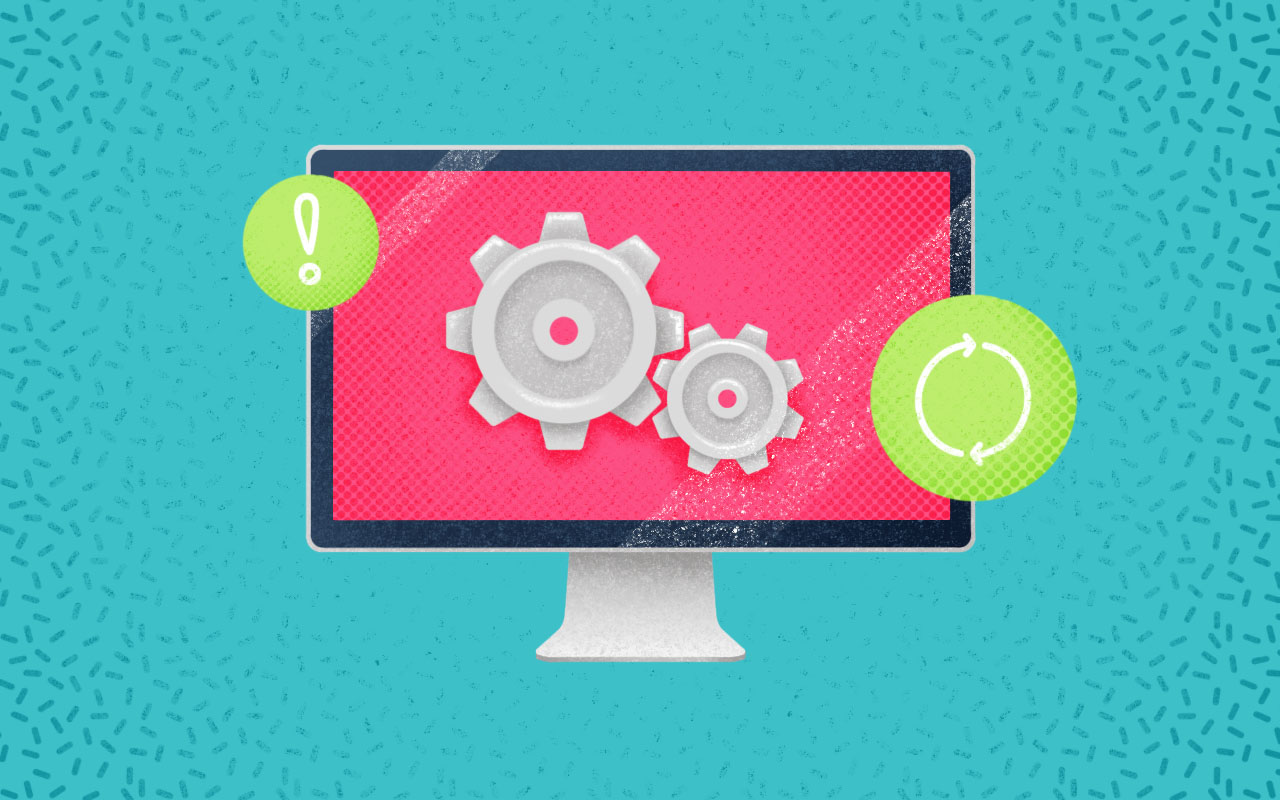Patch management is the process of testing and applying patches (also known as updates) to software systems via software code to the existing programs. The updates typically address vulnerabilities and bugs that, once fixed, improve the overall software system security and performance—critical for organizations to stay ahead of potential security threats. To reduce the risk of cybersecurity breaches within an IT infrastructure, regular and timely patching is essential.
How does Patch Management relate to ITSM?
Patch management and ITSM go hand-in-hand with each other. For ITSM teams, patch management is key to preventing digital meltdowns. By staying on top of updates, you will save yourself from future IT headaches (and, ultimately, make your life way easier). For security teams, consider who will be the first to hear when a security incident occurs? Oftentimes, it’s the IT help desk. ITSM is the front line of support and security for employees.
Keep reading this article to learn more about the importance of patch management in ITSM, the process of applying patches, and the best practices for patch management.
Patch Management Process
Patch management matters because it catches and fixes system vulnerabilities—reducing downtime and preventing hackers from accessing data. Without a centralized process for applying these changes to the IT infrastructure of a business, the security and performance of the business would be slower and less secure. Below is an example of the start to finish process for successful patch management within an IT department.
- Assessment: Identify the need for patches by keeping track of all software vulnerabilities, security updates, and bug fixes.
- Testing: Run patches in a controlled environment to make sure they don’t introduce new issues or cause a conflict with the existing software (crucial before the code gets pushed live).
- Deployment: After patches pass testing, they are deployed to the production environment, where they are then launched to the live software (can be manual or an automated process).
- Verification: Once patches are deployed, they need to be verified. Is the system functioning as it should? In other words, were the patches applied successfully?
- Monitoring: Systems should be continuously watched for any issues, performance changes, or vulnerabilities (proactive IT management).
Patch Management Best Practices
Effective patch management is crucial for maintaining the security and stability of IT systems. By following these patch management best practices below, organizations can set up a proactive patch management strategy to contribute to the overall security and reliability of their IT infrastructure.
- Create a Patch Management Policy – Develop clear language outlining the procedures and responsibilities (include a timeline) for applying patches. Additional topics to include in your patch management policy include how often to scan for IT weaknesses and a rollback plan (i.e., what to do if the patch fails). For this step you can leverage organizational agreements (service-level agreements, SLAs) to keep teams in check.
- Prioritize Critical Systems and Vulnerabilities – Identify critical vulnerabilities and place an emphasis on patching the most exposed threats with severe consequences first.
- Regularly Assess for Vulnerabilities – Conduct vulnerability assessments and scans regularly to identify potential weaknesses in the IT infrastructure (build these scans into your patch management policy as listed in bullet #1 above).
- Test Patches in a Controlled Environment – Before you deploy a patch (publish it across your live platform), test it in a controlled environment. On top of making sure the patch works as it should, also check that the new code doesn’t cause any conflicts with other code in the system.
- Automate Patch Deployment – Set up an automation tool to deploy your patches in a consistent, timely manner (plus, it reduces the risk of human error—saving your budget in the long run).
- Keep an Inventory of Assets – Maintain a record of active hardware and software assets to track all devices associated with patch management.
- Monitor Patch Status – Use monitoring tools to track the status of applied patches and generate reports to assess the compliance of patches. You can also use the reports to identify any systems that could be at risk for threats.
- Third-Party Application Patching – Since many security vulnerabilities target applications (e.g., web browsers and office productivity tools), consider including patching for third-party applications.
- Educate End Users – Keep end users aware of how and why it’s important to install patches and updates promptly. Additionally, inform them of how to practice good online security practices (e.g., not delaying system updates and reporting if they witness any suspicious activity).
Improve Patch Management Significantly: Use Automation
In ITSM, a secure IT environment is foundational to protecting sensitive data.
Which is exactly why pairing patch management with automation software (check out EasyVista’s product) can lead to dramatic changes like improved configuration, reduced human errors, limited server downtime, and faster deployment time.
- Security: One of the primary reasons for patch management is to enhance security. Patches often include fixes for known vulnerabilities, and failing to apply them promptly can leave systems exposed to security threats.
- Stability and Reliability: Patching helps maintain the stability and reliability of IT systems. Updates not only address security issues but also fix bugs and improve the performance of software applications. In an ITSM framework, reliable and stable services are critical to meeting service level agreements (SLAs) and ensuring a positive user experience.
- Compliance: Many industries have regulatory compliance requirements that mandate the regular updating and patching of software systems. With automated patch management processes in place, your organization can adhere to these regulations, and avoid any legal consequences by not staying in compliance.
- Risk Management: Failure to patch systems on time increases the risk of security breaches and disruptions to business operations. Automation aids risk management best practices by identifying and mitigating risks faster than manual processes.
- Incident and Problem Management: Effective patch management helps prevent incidents related to security vulnerabilities by taking a proactive, not reactive approach to patching and threat detection.
- Asset Management: It’s important your business maintains an accurate, updated configuration management database (CMDB) to support all other ITSM processes—where patch management comes into play significantly. Maintaining an inventory of software assets and their patch status will help you manage your IT resources effectively.
As someone who works in IT, you understand the importance of keeping your company’s data secure, in compliance, and updated. Which is why learning about the benefits of adding automation to your patch management process is even more pressing. You have the tools and resources available, here’s how you can begin to take advantage of them to get more out of your current (or new) ITSM tools. If you need help finding the right patch management automation tool, book your free demo call with one of EasyVista’s consultants!

